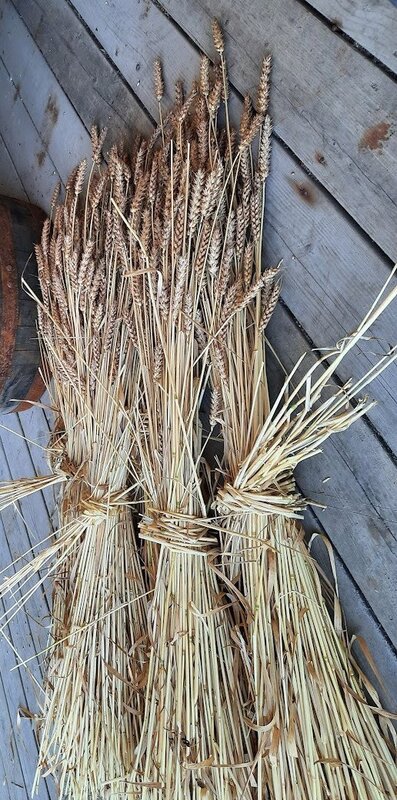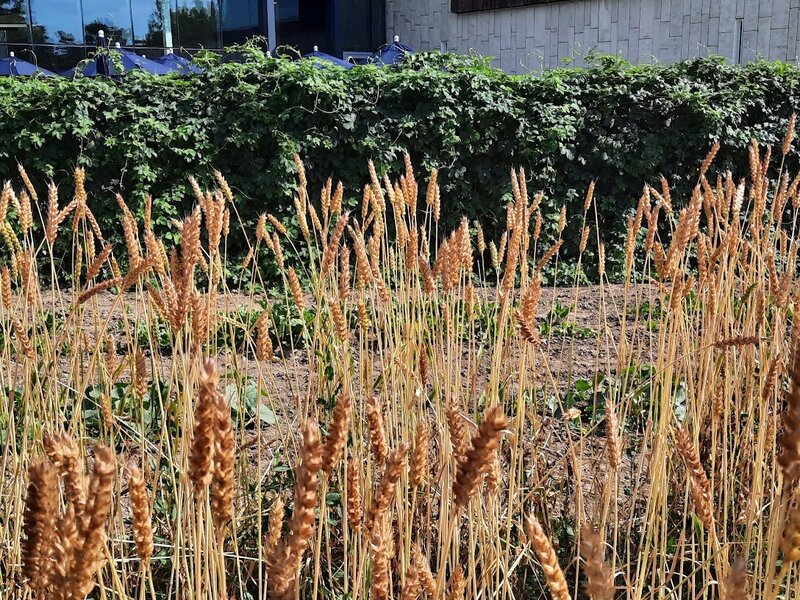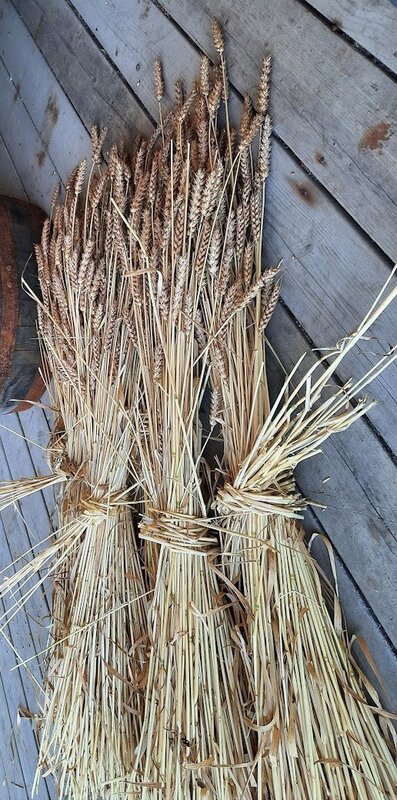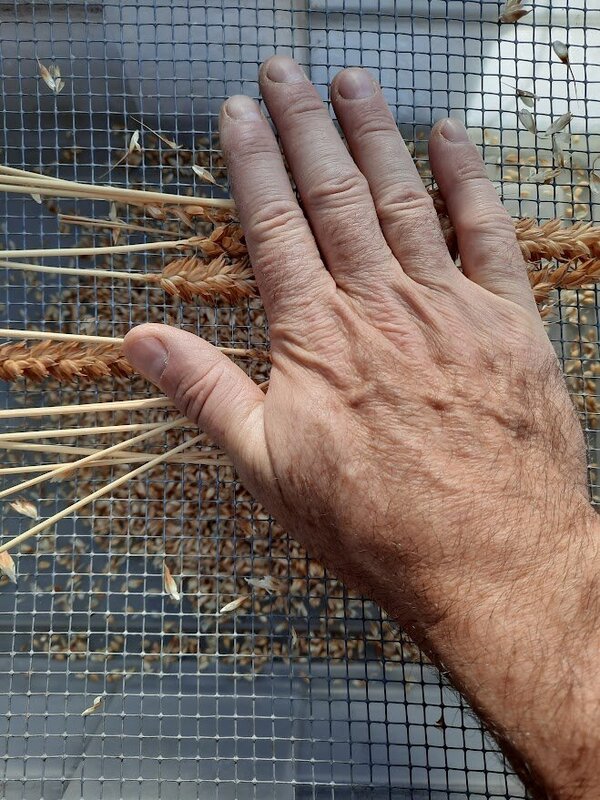Growing Grains for Conservation

If you've ever wondered about growing grains like wheat, oats, and barley in your garden, you might have been discouraged by the amount needed to make a few loaves of bread, or by the effort required to thresh and process the grains. You're not alone. Growing grains is a fascinating experience for any gardener, but in the long run most of us go back to buying flour because large-scale mechanized farms seem to make more sense. However, there is a reason for gardeners to learn how to grow grains - to help conserve heritage varieties, even in small scales.
At Seeds of Diversity, we often work with small amounts of seeds. A few hundred grams of wheat won't make more than a bagel or two, but it can be enough seed to preserve and restore a heritage variety. At that scale, conservation is not only important for genetic preservation, it's also completely easy to do with a small garden and no special equipment. Let's see how.
By the way: This article is about cool-growing, grass-like grains such as wheat, oats, spelt, and barley. Other grains including rice, amaranth, quinoa, and corn, have different requirements.
How Much Space?
The biggest myth about a gardener's ability to grow grains is that they take a lot of space. If your objective is to grow 100 pounds of flour, then yes you'll need a lot of garden space. But for the purpose of conserving a heritage variety, you can do a great job with only a tiny space. Every seed will produce a plant with about 4 or 5 heads, and there are usually at least 20 kernels (seeds) in each head. That's a multiplier of around 100!
Better yet for space considerations, you can grow grain plants quite close together. Plant rows about 6 inches apart, with a seed every 1 to 2 inches in the rows. We use a rule of thumb to bury the seeds about half an inch deep. A little math tells us that 10 feet of row will yield about 5000 seeds! That's less than it sounds if you want to bake bread, but it's more than enough to keep a variety alive and rejuvenate a small seed bank collection.
Wheat and related grains usually grow at least waist-tall, so we suggest running a pathway every 3 or 4 rows so you can get between the plants easily. Most likely, the close spacing of the plants and their height will tend to shade the ground so grains compete really well with weeds. If your soil is good and not super weedy, you can probably just sow and walk away until it's time to harvest.
Isolation Between Varieties
One of the crucial considerations in seed conservation is preventing cross-pollination. Luckily, wheat, oats, and barley are all self-pollinating. We recommend growing different varieties at least 10 meters (about 30 feet) apart, but for most gardeners growing one or two varieties that isn't very difficult.
Harvesting and Processing
The second biggest myth about growing grains in a garden is that you can't harvest or use them without expensive equipment. There's no question that machines make threshing and milling a lot easier, but at a small scale, you can do the work by hand without much difficulty.
First, grain should be harvested when the heads turn from green to brown. By that time, the leaves will be drying too. Don't wait too long, because some varieties start to drop their seeds when they ripen too far. Cut the plants near the ground with a scythe, or a long knife or garden shears if you're one of the 99.9% of people who don't own a scythe. Gather the plants with stems and all, and tie them in bundles of convenient sizes. Store the bundles in a dry, aerated place where mice won't eat them, until the kernels dry. You can tell when they're dried by chewing on one - they're hard when dry, and delicious.
Now you can remove the seeds from the dried grain heads by "threshing". One way is to place them on a tarp and beat them with a stick. Another is to rub the heads through a screen (see the photo). Either way, the kernels will separate and fall out of the heads.
Next is the process of "winnowing", or removing the light chaff from the heavy kernels. This is easy to do with an electric fan, or by placing a small amount of kernels in a shallow bowl and blowing the chaff away with your own breath. You can easily imagine that for large amounts of grain this process was a real incentive for farmers to invent machines. But for small amounts, like our conservation samples, you can finish the job in 10 minutes.
What to Do With Your Grain
Store your grain in glass jars in a cool, dry place. By this point you'll be able to tell how much you need for seed, if you want to plant it again, or for others to try growing it. We normally ask our volunteer growers to send us back about 100g of seed, which leaves lots left for eating.
Grinding wheat into flour is not really easy. You can get a coarse grind using a really good blender, but a delicious way to use your grains is to boil them. Just as you'd use oats and rice, other grains make delicious dishes when simply cooked too. Recipes for cooking "wheat berries" are easy to find, and help to remind us that there's more to wheat than just breads and pastries.

Wheat ready to harvest

Bundles or "sheaves" of wheat to be stored in a dry, ventilated place

Hand-threshing wheat with a screen
Not yet a member?
An annual membership to Seeds of Diversity gives you access to our seed exchange, seed grow-out programs, and our online news.

We depend on donations to do our work.

Thank you for your support!
